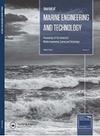基于FMEA和MCDA的综合风险管理方法,支持在高压-高温(HPHT)条件下延长海底设施的寿命
IF 4.4
4区 工程技术
Q1 Engineering
Journal of Marine Engineering and Technology
Pub Date : 2020-10-13
DOI:10.1080/20464177.2020.1827486
引用次数: 11
摘要
20世纪80年代和90年代安装在海上油气田的大多数设施设计为在“正常”条件下运行。然而,在油田的使用寿命期间,可能会发现一些新的高压/高温(HPHT)井,并将其与旧设施连接起来。在恶劣环境中超过设计参数运行这些设施可能会导致灾难性故障,导致重大经济损失和环境问题。管理与HPHT环境中老化海底设施故障相关的风险被认为是一项非常复杂和关键的任务。为了克服这一挑战,需要开发决策方法,能够准确估计与高氟氯烃高温高压条件相关的风险,并优先考虑风险缓解和补救策略。本文旨在提出一个基于失效模式与影响分析(FMEA)方法和混合多准则决策分析(MCDA)模型的综合风险管理框架,用于评估HPHT环境中海底设施延长寿命期间的风险并优先考虑缓解策略。为了说明该模型,提供了海底管汇和出油管线的案例研究,并对结果进行了评估和讨论。我们的研究结果表明,所提出的方法大大改进了适用于海底石油和天然气设施的经典风险管理流程,因为它可以帮助资产管理者、风险分析师、监管机构和政策制定者建立一个既考虑主观(定性)判断又考虑客观(定量)评估措施的决策模型。本文章由计算机程序翻译,如有差异,请以英文原文为准。
An integrated FMEA and MCDA based risk management approach to support life extension of subsea facilities in high-pressure–high-temperature (HPHT) conditions
The majority of facilities installed in offshore oil and gas fields during the 1980s and 1990s were designed to operate in ‘normal’ conditions. However, during the operational life of the fields, some new high pressure/high temperature (HPHT) wells may be discovered and tied back to older facilities. Operating these facilities beyond their design parameters in harsh environments may lead to catastrophic failures, resulting in significant economic losses and environmental problems. Managing the risks associated with failure of ageing subsea facilities in HPHT environments is considered as a very complex and critical task. To overcome such challenge, there is a need for development of decision-making methods that are capable of estimating precisely the risks associated with HPHT conditions as well as prioritising the risk mitigation and remediation strategies. This paper aims to propose an integrated risk management framework – based on Failure Mode and Effects Analysis (FMEA) approach and a hybrid Multi-Criteria Decision Analysis (MCDA) model – for evaluating the risks and prioritising mitigation strategies over the extended lifetime of subsea facilities in HPHT environments. For the purpose of illustrating the model, a case study of subsea manifold and flowlines is provided and the results are evaluated and discussed. Our findings indicate that the proposed approach offers significant improvement to the classical risk management processes applied to subsea oil and gas facilities as it can assist asset managers, risk analyst, regulators and policy makers with a decision model which considers both subjective (qualitative) judgements and objective (quantitative) evaluation measures.
求助全文
通过发布文献求助,成功后即可免费获取论文全文。
去求助
来源期刊

Journal of Marine Engineering and Technology
工程技术-工程:海洋
CiteScore
5.20
自引率
0.00%
发文量
0
审稿时长
>12 weeks
期刊介绍:
The Journal of Marine Engineering and Technology will publish papers concerned with scientific and theoretical research applied to all aspects of marine engineering and technology in addition to issues associated with the application of technology in the marine environment. The areas of interest will include:
• Fuel technology and Combustion
• Power and Propulsion Systems
• Noise and vibration
• Offshore and Underwater Technology
• Computing, IT and communication
• Pumping and Pipeline Engineering
• Safety and Environmental Assessment
• Electrical and Electronic Systems and Machines
• Vessel Manoeuvring and Stabilisation
• Tribology and Power Transmission
• Dynamic modelling, System Simulation and Control
• Heat Transfer, Energy Conversion and Use
• Renewable Energy and Sustainability
• Materials and Corrosion
• Heat Engine Development
• Green Shipping
• Hydrography
• Subsea Operations
• Cargo Handling and Containment
• Pollution Reduction
• Navigation
• Vessel Management
• Decommissioning
• Salvage Procedures
• Legislation
• Ship and floating structure design
• Robotics Salvage Procedures
• Structural Integrity Cargo Handling and Containment
• Marine resource and acquisition
• Risk Analysis Robotics
• Maintenance and Inspection Planning Vessel Management
• Marine security
• Risk Analysis
• Legislation
• Underwater Vehicles
• Plant and Equipment
• Structural Integrity
• Installation and Repair
• Plant and Equipment
• Maintenance and Inspection Planning.
 求助内容:
求助内容: 应助结果提醒方式:
应助结果提醒方式:


